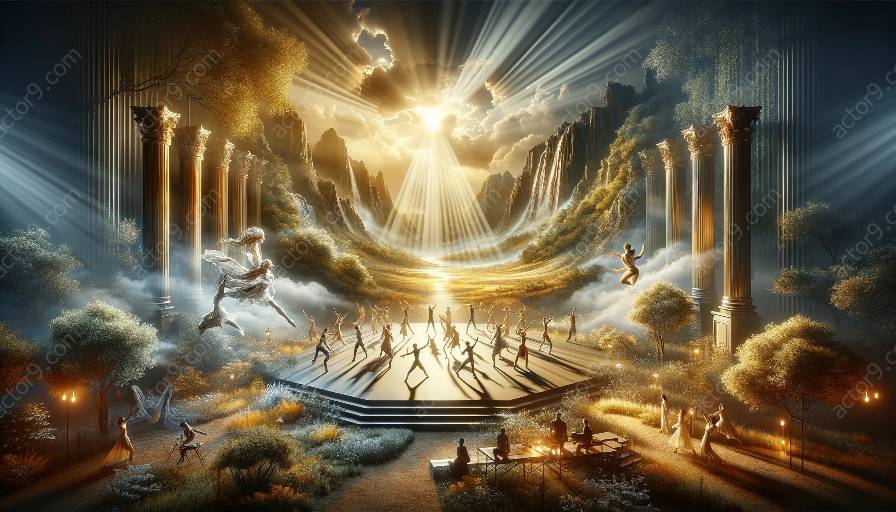Physical theatre, with its emphasis on non-verbal communication and storytelling through movement, relies heavily on various elements to convey emotions and intensify the audiences' connection with the performance. One of the most crucial yet often overlooked components in physical theatre is lighting.
Lighting plays a pivotal role in accentuating the emotional dynamics of physical theatre performances by creating an immersive and dynamic atmosphere that enhances the storytelling, character development, and overall impact of the production.
The Significance of Lighting in Physical Theatre
Lighting in physical theatre serves as a powerful tool to set the mood, evoke specific emotions, and direct the focus of the audience. It not only illuminates the stage but also shapes the narrative and influences the audience's perception of the performance. The interplay of light and shadow can create dramatic effects, heighten tension, and guide the audience through the emotional journey portrayed by the performers.
Enhancing Movement and Expression
One of the key aspects of physical theatre is its reliance on movement and gesture to convey emotions and tell a story. The strategic use of lighting can accentuate the performers' movements and expressions, making their physicality more pronounced and emotionally resonant. By sculpting the visual landscape, lighting allows the audience to perceive the nuances of the performers' actions, adding depth and intensity to their portrayal of characters and emotions.
Creating Atmosphere and Ambience
Lighting design contributes significantly to creating the atmosphere and ambience of a physical theatre performance. Through the use of colors, intensity, and positioning, lighting can transform the stage into various emotive settings, from serene and contemplative to intense and haunting. It can transport the audience into different emotional realms, amplifying the impact of the narrative and heightening the engagement between the performers and the spectators.
Highlighting Emotional Beats and Transitions
Furthermore, lighting serves to highlight the emotional beats and transitions within physical theatre performances. It can punctuate pivotal moments, intensify conflicts, and accentuate resolutions, guiding the audience's emotional responses and enhancing the overall dramatic effect. The interplay of light and dark mirrors the emotional ebb and flow within the performance, creating a visual and emotional rhythm that resonates with the audience.
Exploring Character Depth and Psychology
Lighting not only illuminates the physical movements of the performers but also delves into the psychological and emotional aspects of the characters portrayed. Through the manipulation of light, the nuanced complexity of the characters' internal struggles, desires, and conflicts can be visually communicated, deepening the audience's understanding and empathy towards the characters and their emotional journey.
The Collaborative Nature of Lighting Design and Performance
Effective integration of lighting design in physical theatre is a collaborative process that involves close coordination between lighting designers, directors, and performers. The synergy between lighting and physical performance requires careful choreography and synchronization to ensure that the emotional dynamics and narrative intentions are effectively communicated to the audience.
Experimentation and Innovation
As physical theatre continues to evolve, so too does the role of lighting in shaping and enhancing its emotional dynamics. Lighting designers and practitioners constantly seek innovative ways to push the boundaries of traditional lighting techniques, incorporating technology and unconventional methods to create mesmerizing visual experiences that complement and elevate the artistry of physical theatre.
In Conclusion
Lighting, as an integral aspect of physical theatre, significantly contributes to shaping the emotional dynamics of performances. By skillfully manipulating light and shadow, designers and practitioners can elevate the impact of physical theatre, intensify the audience's emotional engagement, and enrich the storytelling and character portrayal within this captivating form of theatrical expression.




































